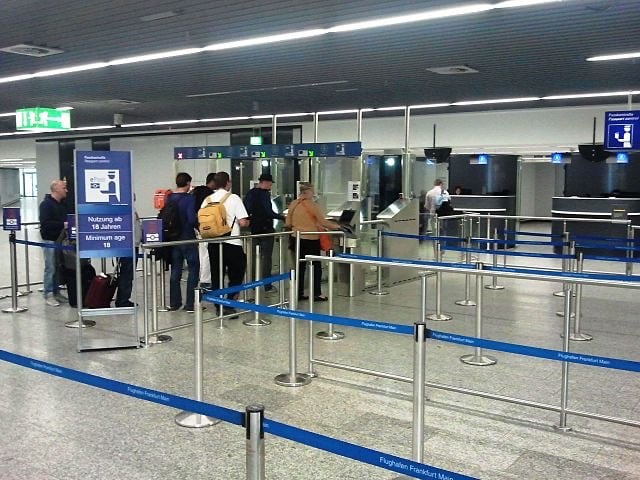The Calm Before a Storm of Travel Disruption
If you’re planning a holiday to Europe anytime after October, you might want to pack some patience along with your passport. A perfect storm is brewing for British travelers thanks to a new EU regulation that could turn airport arrivals into a nightmare. The EU’s new Entry/Exit System (EES), set to launch in October 2025, is expected to cause chaos at borders across Europe, according to Tony Smith, former Director General of the UK Border Force.
While Prime Minister Keir Starmer has been quick to claim victory with a new “reset” deal that includes access to EU e-gates for Brits, Smith has a stark warning: “You ain’t seen nothing yet.” And that’s not hyperbole. It’s a wake-up call for travelers, tour operators, and even EU airport authorities who may be underestimating just how disruptive these changes could be.
As the UK attempts to mend its post-Brexit relationship with the EU, a tug-of-war over border control efficiency is unfolding—one that pits technology against bureaucracy, and optimism against stark operational reality. In this article, we’ll dive into what the new EES entails, why experts are sounding the alarm, and whether Starmer’s e-gate deal is enough to save British holidaymakers from hours of queuing misery.
What Is the EU Entry/Exit System (EES)?
The Entry/Exit System (EES) is the European Union’s latest attempt to tighten border control across the Schengen Zone. Essentially, it’s a high-tech biometric tracking system aimed at replacing the old passport stamping process for non-EU nationals. And while that sounds efficient on paper, the reality for millions of British travelers could be much more complicated.
How the EES Works and When It Will Begin
The EES is slated to go live in October 2025, and it will apply to all non-EU travelers entering Schengen Area countries. Here’s what’s changing:
- Instead of getting a simple passport stamp, travelers will now be digitally logged.
- The system will collect facial images and fingerprints.
- It will automatically track how long you stay in the EU, flagging overstays in real time.
While the intent is noble—reducing illegal overstays, increasing security, and speeding up processing—it comes with significant challenges. Each traveler entering or exiting the EU will need to stop, scan their biometric data, and wait for the system to process their details. Sounds like a queue waiting to happen, right?
Why It Matters for British Travellers
Since Brexit, UK nationals are no longer EU citizens, which means they’re now treated as “third-country” travelers. That puts them squarely in the EES system’s sights. Every British passport holder entering the EU will have to go through the same biometric checks as a traveler from, say, the United States or India.
And while frequent EU travelers might be used to showing a passport, they’re probably not prepared for fingerprint scans and facial recognition at crowded airport terminals. Multiply that by the millions of Brits who holiday in Spain, France, Italy, and Greece every year, and you’ve got a recipe for hours-long queues—particularly at major entry points like Paris Charles de Gaulle, Madrid-Barajas, and Rome Fiumicino.
Tony Smith’s Dire Warning: “You Ain’t Seen Nothing Yet”
Who Is Tony Smith?
Tony Smith isn’t just a commentator; he’s one of the most experienced border control experts in the UK. As the former Director General of the UK Border Force and now a well-respected consultant on global border security, his words carry serious weight. Smith has been through it all—from overseeing immigration reform to managing international border crises.
What He Said and Why It Matters
Speaking publicly about the looming EES implementation, Smith didn’t mince words: “If you think the queues are bad now—you ain’t seen nothing yet.” His warning stems from the sheer scale of changes required to implement EES smoothly. According to Smith, most EU airports simply aren’t prepared to handle the biometric processing of millions of travelers.
He anticipates delays not just because of volume, but because of infrastructure: “Are the booths in place? Are staff trained? Are travelers aware of what’s coming?” His answer? No, not yet—and the clock is ticking.
Smith also raises a critical point about repeat travelers. While the EES promises to make re-entry quicker after your data is stored, the initial data capture will still cause massive bottlenecks at airports and ferry terminals. Plus, the technology rollout won’t be uniform. Some airports might be ready. Others? Not even close.
His overall message is one of caution: don’t expect smooth sailing in the early months of EES, and certainly don’t bank on your typical 15-minute customs experience.
The Brexit ‘Reset’: Keir Starmer’s E-Gate Breakthrough
What Are E-Gates and How Do They Work?
E-gates are automated border control systems that allow travelers to scan their passports and verify their identity using facial recognition. They’re already common in many UK and EU airports and are generally reserved for EU nationals or trusted travelers from selected countries.
Under Keir Starmer’s new Brexit ‘reset,’ British passport holders will once again be eligible to use e-gates in several EU countries. This move is being touted as a major win for post-Brexit mobility and a significant reduction in airport congestion.
Is This Really a Win for UK Travellers?
While the headlines may trumpet this as a victory, the reality is more nuanced. Yes, e-gates can speed up the entry process significantly—but only if you qualify. Some airports may limit access to travelers over 12 years old, and others might still direct non-EU nationals to manual booths if there’s any system hiccup or documentation issue.
More importantly, e-gates don’t negate the EES. Biometric data still needs to be collected manually during a traveler’s first post-EES trip. That means that even with e-gate access, your first visit after October 2025 might involve long queues and a full biometric intake.



